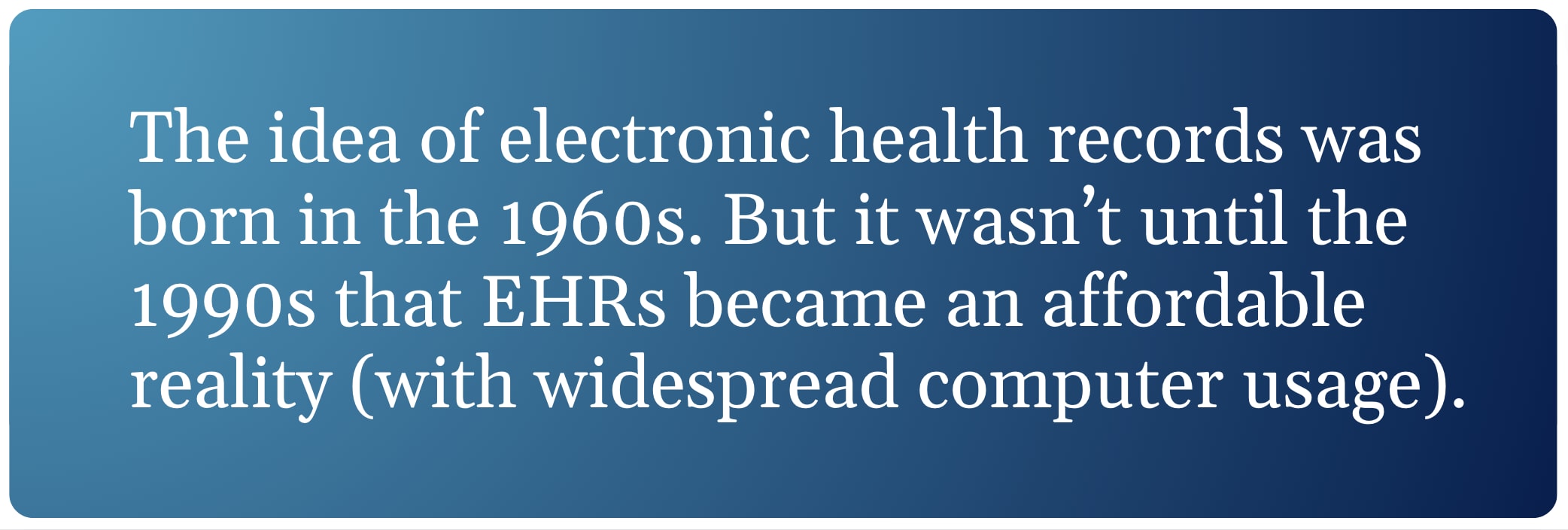The Development of Electronic Health Records

The question of who invented electronic health records (EHRs) actually has many answers, but the development of EHRs can be traced back to the early 1960s. Traditionally, patient medical records had been kept on paper, in files. Those files were marked with various identifying information, often including the patient’s last name and an ID number, which may have contained part or all of the patient’s Social Security number. Those files were kept in cabinets or on shelves designed especially for medical records.

In the 1960s, Larry Weed, an American physician, researcher, educator, and entrepreneur, developed the Problem Oriented Medical Record. With this, Weed introduced the idea of electronically recording and maintaining patient data. Weed may be identified as the person who invented electronic health records themselves. In 1972, however, the first electronic medical record (EMR) system was developed by the Regenstrief Institute, according to the University of Scranton. Regenstrief’s EMR system was expensive and so was not attractive to physicians for use with their patients. The system was used, though, “by government hospitals and visionary institutions.”
As the personal computer became more common and more affordable, and as the Internet developed, EHR innovations also developed. Web-based EHRs started to emerge. In 1991, the Institute of Medicine (IOM), a division of the National Academies of Sciences, Engineering, and Medicine, led the way toward computer-based patient records by sponsoring studies and reports on the relatively new concept.
Throughout their development, EHRs have been identified by many names, including electronic medical records, computerized medical records, longitudinal patient records, and electronic charts. A Pearson Higher Ed publication states that “in 2003, the IOM chose the name electronic health records, or EHR, because ‘health’ means ‘a state of well-being.’”
The IOM subsequently established eight core functions that should be performed by an EHR, including:
- Health information and data
- Result management
- Order management
- Decision support
- Electronic communication and connectivity
- Patient support
- Administrative processes and reporting
- Reporting and population health
According to Pearson, these “eight core functions … became determining factors in the evolution of EHR, and the ability to perform these functions is the criteria by which EHRs are judged.”
Download Our Free EHR Buyers Guide to Learn More
Download our free EHR Buyers Guide to learn what features you need to have in an EHR solution!
